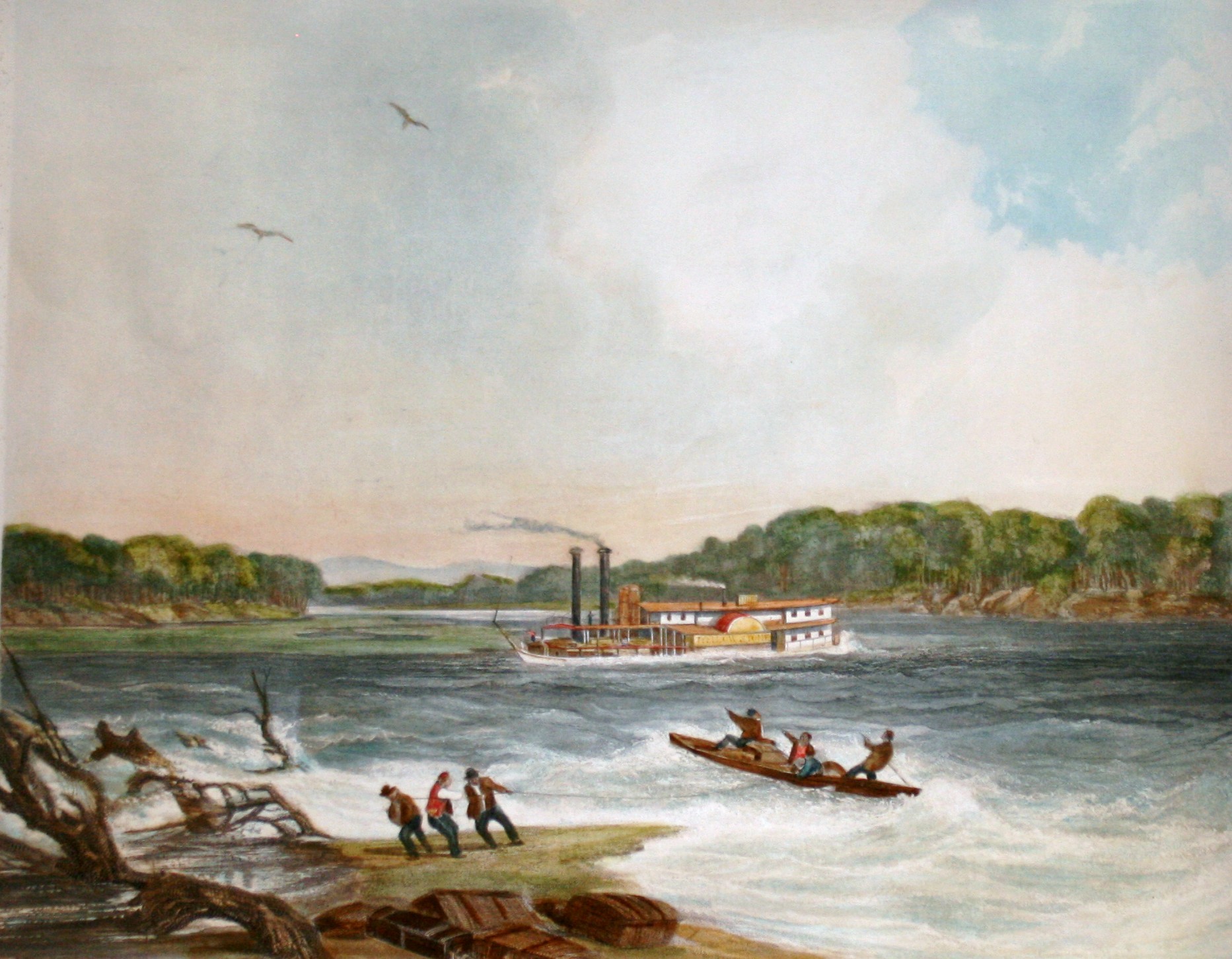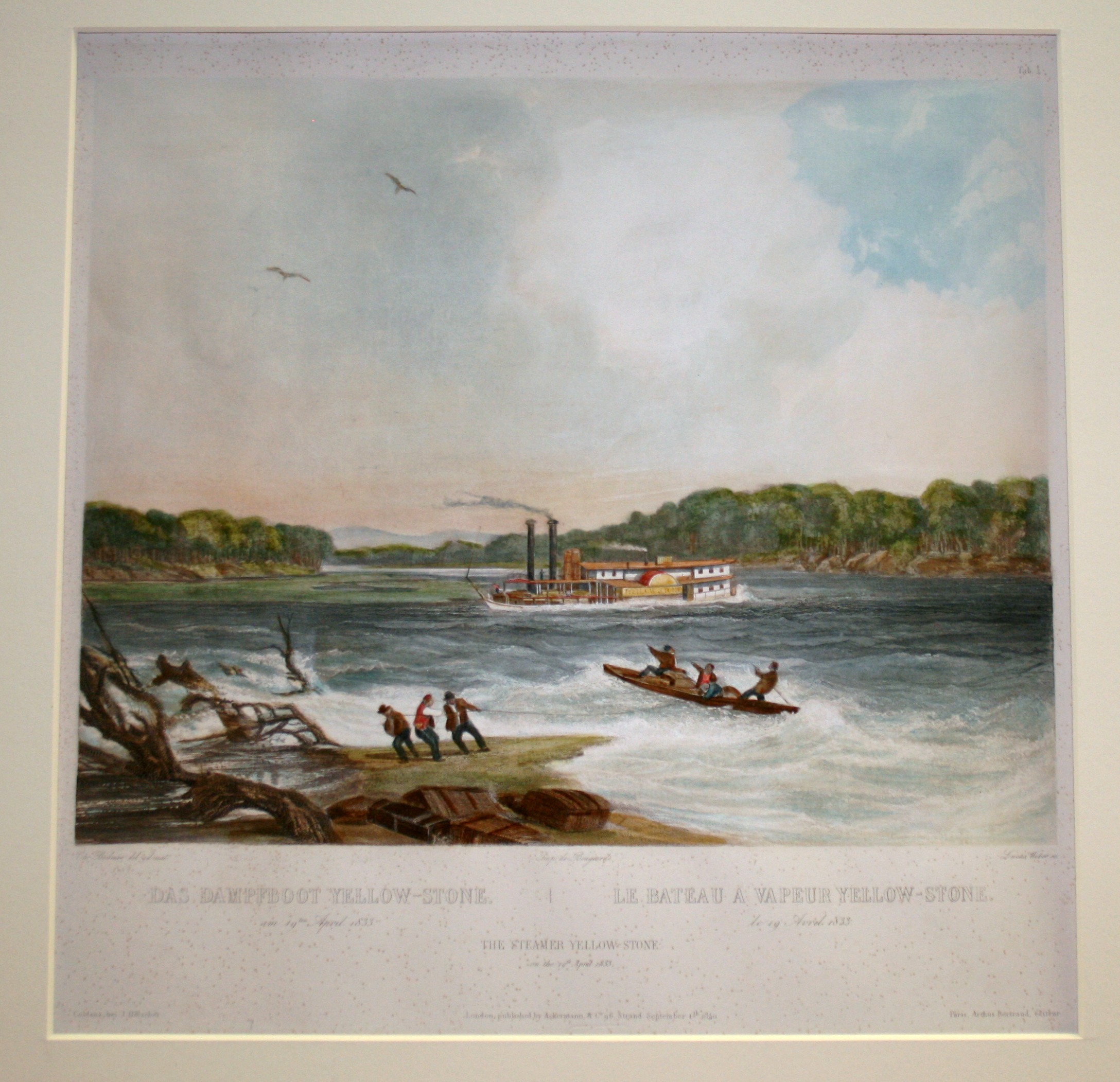Karl Bodmer Aquatint "The Steamer Yellowstone/On The/ 9th April 1833"
JEFF 4767

Swiss artist Karl Bodmer was one of the greatest painters of the American West. His aquatint engraving entitled "Steamer Yellow-Stone/On The/ 19th April 1833" is the artifact of the month.
Bodmer was born in Zurich in 1809 and began to show artistic talent at the early age of 13. He apprenticed with his uncle who taught him how to produce watercolor paintings, engravings, and aquatints. An aquatint is a printmaking technique, a variant of etching. Later, as a member of the Barbizon School of painting, he traveled around Switzerland and the Rhineland creating romantic scenes of cities and landscapes. Bodmer's engravings were known for their attention to detail and beautiful color.
From 1832 to 1834, Bodmer accompanied a German explorer, Prince Maximilian zu Wied-Neuwied on an American expedition along the Upper Missouri River. Bodmer was hired as an artist with the specific intent of recording images of cities, rivers, towns, and people they saw along the way, including many images of Native Americans living along the Missouri River.
In April of 1833, Maximilian's party set out from St. Louis up the Missouri River on the steamboat Yellow-Stone. Their 2500 mile long journey by steam and later keelboat finally reached Fort Clark,where they wintered for five months. Bodmer chronicled the life of the Mandans in his work, which continues today to be of significant ethnographic importance. In the following spring, the group returned to St. Louis. Our featured aquatint shows the steamer Yellow-Stone upon which the group sailed for the first leg of their trip. The trip was dangerous due to threatening snags and sandbars along the river. In the foreground of the aquatint, the viewer sees three men trying to pull in a smaller boat before it hits the snags around the bend. Bodmer's engravings were known for their attention to detail and beautiful color.
Maximilian's group left America in July of 1834. Upon his return to Germany, the prince used his own money to publish a book detailing the expedition in America. Included in his book were Bodmer's illustrations. Bodmer captured the challenges and dramatic landscape of the American West, which was still unfamiliar to audiences in both the Eastern United States and Europe. He moved to Paris in 1836 and had many scenes from the expedition reproduces as aquatints. His works are remarkable for their careful detail and sensitivity and are recognized as some of the most perceptive and visually compelling visions of America and its peoples.
The University of Oklahoma Press recently published a three-volume set of Prince Maximilian's journals. The elaborate, oversize volumes titled The North American Journals of Prince Maximilian of Wied, are available to students and researchers in the Jefferson National Expansion Memorial Library, located in the Old Courthouse.

